Solutions to violations
Posted on - Tuesday, November 4th, 2025And Texas Architects, scroll down for an explanation of the
new TDLR registration process
Toilets that are too far
At some of my ADA inspections, there have been times that I come across toilets that are located closer or farther than the range from the side wall to the centerline of the toilet.
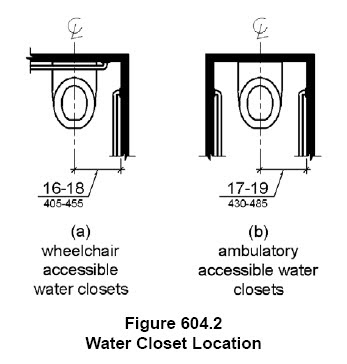
This ADA figure above shows the range where the toilet is allowed to be mounted.
Letter (a) is the figure to follow
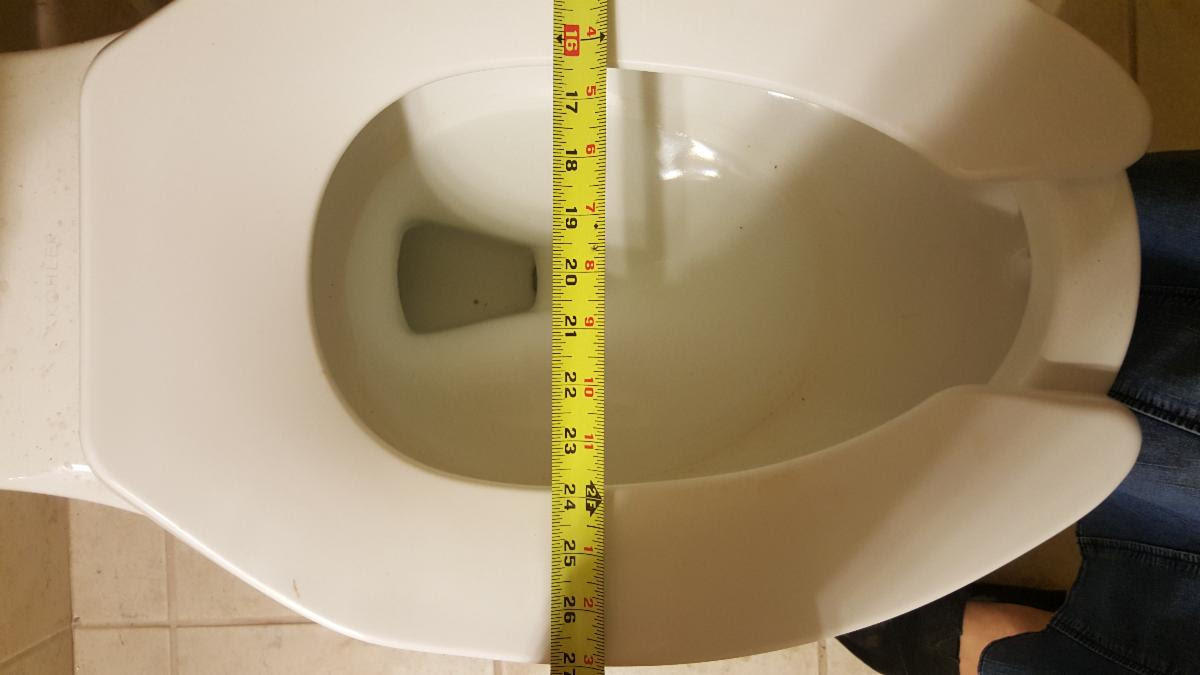
The toilet is located 20″ from the side wall to the centerline of the toilet
The solutions for this could be either be to move the toilet into the correct location. But sometimes that is not feasible.
Another solution can be to fur out the side wall and re-install the grab bar like the photo shown below
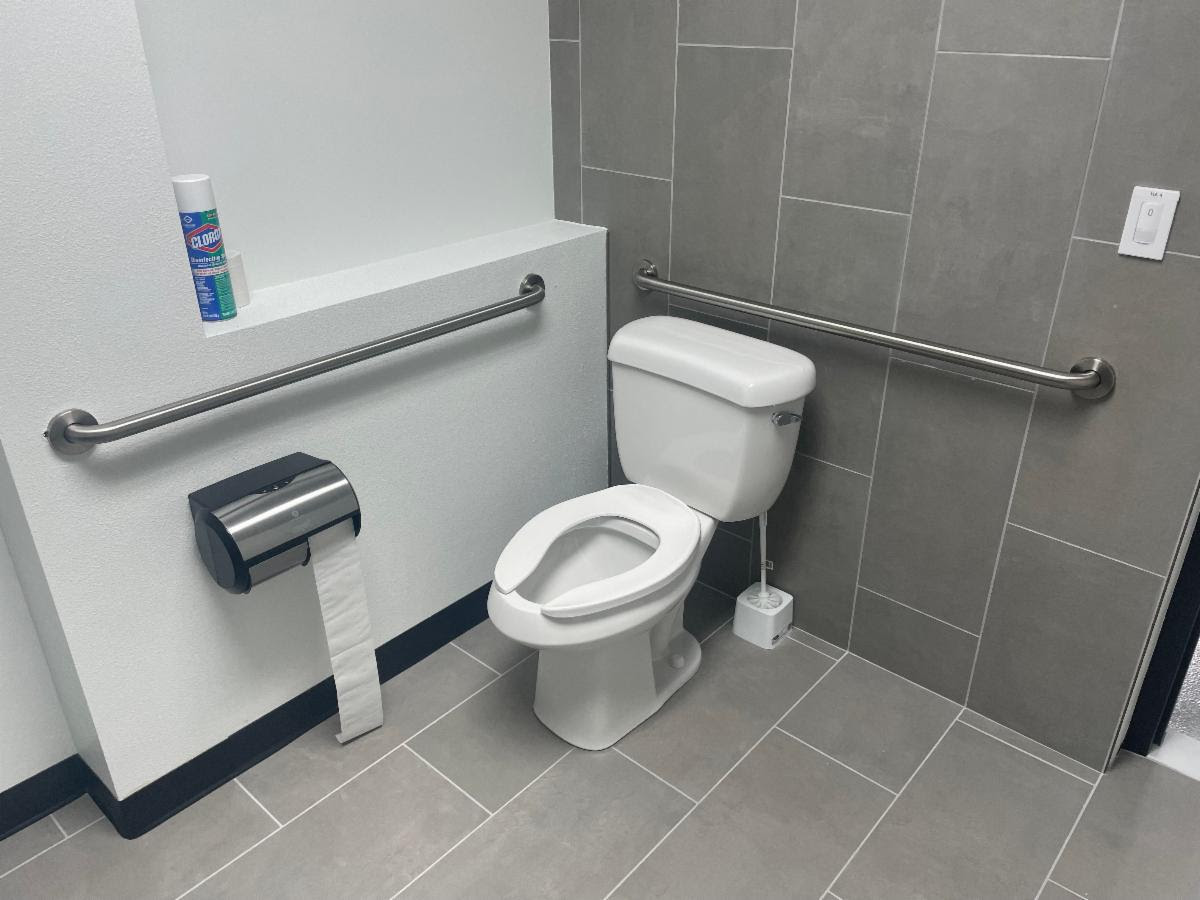
The side wall was furred out in order to provide the correct location from the side wall to the centerline of the toilet.
CANE DETECTION
Objects that are located along a pedestrian circulation path and projecting more than 4″ onto the path is considered a protruding object and a hazard for people who are visually impaired. To resolve the violation without removing the element, adding elements that are cane detectable (mounted below 27″ a.f.f.) would solve the problem.
Some examples are shown below and the solutions are provided
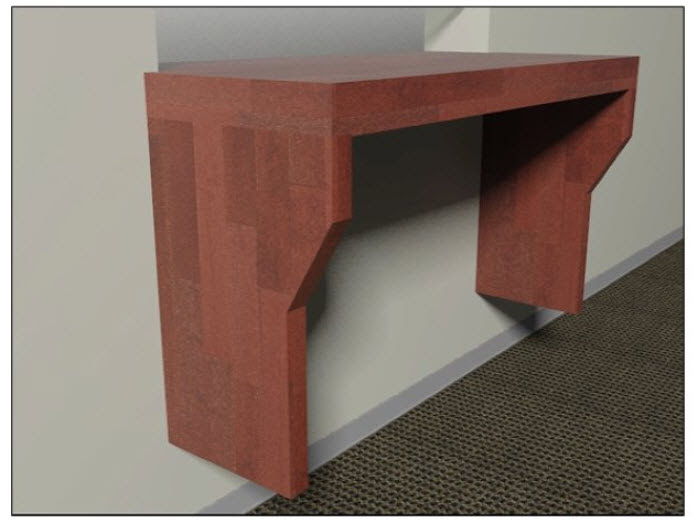
The counter was protruding onto the circulation path until they added panels on either side which are cane detectable.
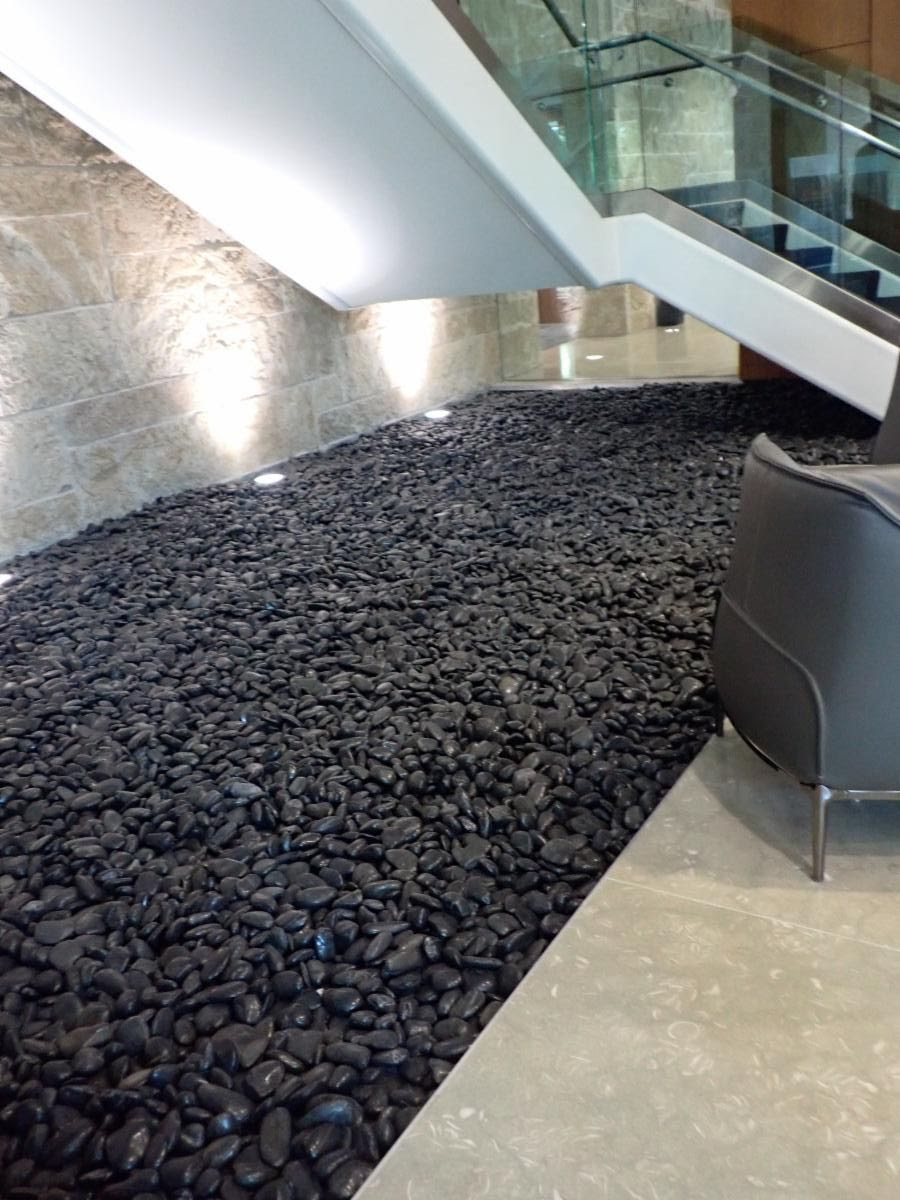
The open stair is a protruding object and the river rock area provides cane detection. A blind person will feel the rocks and avoid walking under the stair.
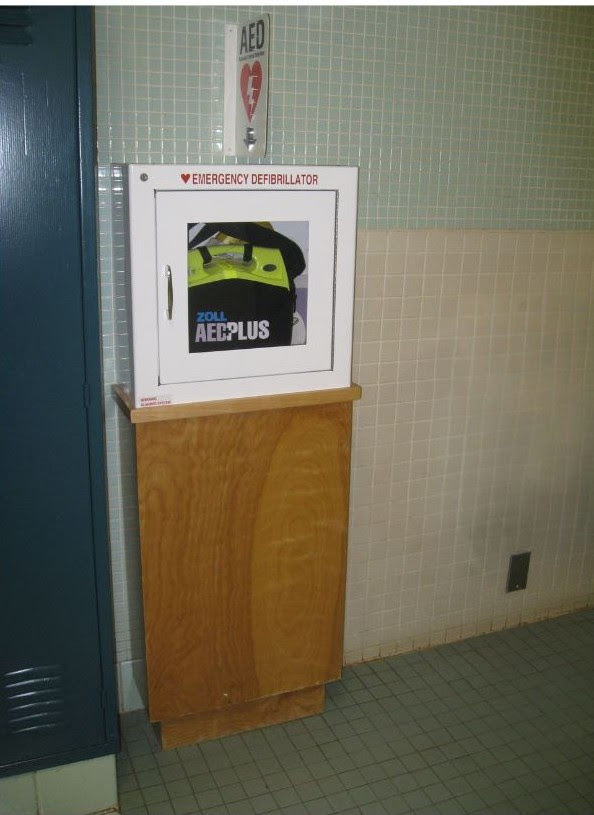
The defibrillator was projecting more than 4″ onto the circulation path, but they build a case work below it which acts as cane detection
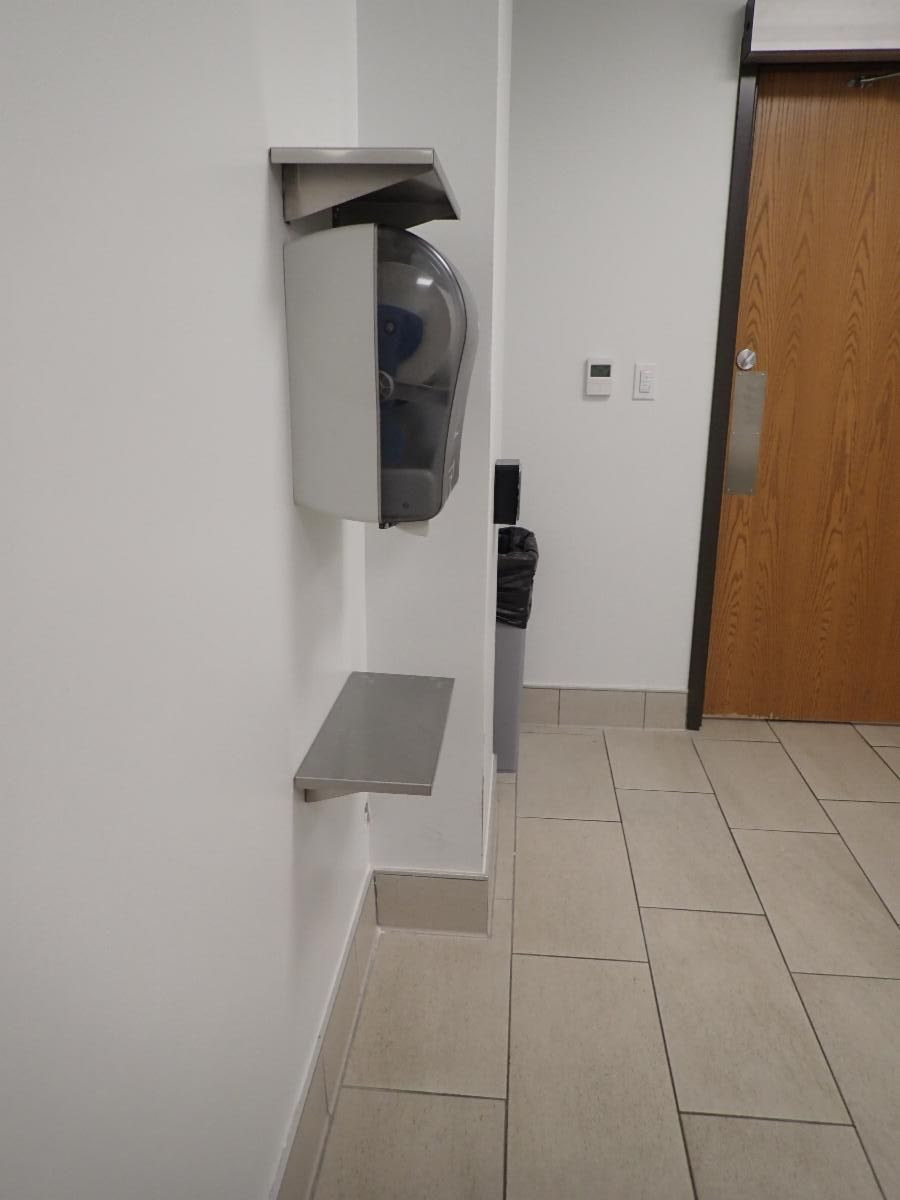
The paper towel dispenser was protruding object, and they added a shelf mounted below 27″ a.f.f. as cane detection.
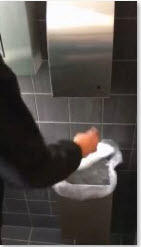
But not all cane detection solutions are good ones….see the video….a trash can under a protruding hand dryer may not be a good idea!
MIRRORS MOUNTED HIGHER THAN 40″ A.F.F.
Sometimes the mirrors’ reflective surface are mounted higher than 40″ a.f.f. The solution could be to move it down, or a full length mirror can be provided instead. The ADA and TAS has an advisory that allows the full length mirror to be provided instead
Advisory 603.3 Mirrors. A single full-length mirror can accommodate a greater number of people, including children. In order for mirrors to be usable by people who are ambulatory and people who use wheelchairs, the top edge of mirrors should be 74 inches (1880 mm) minimum from the floor or ground.
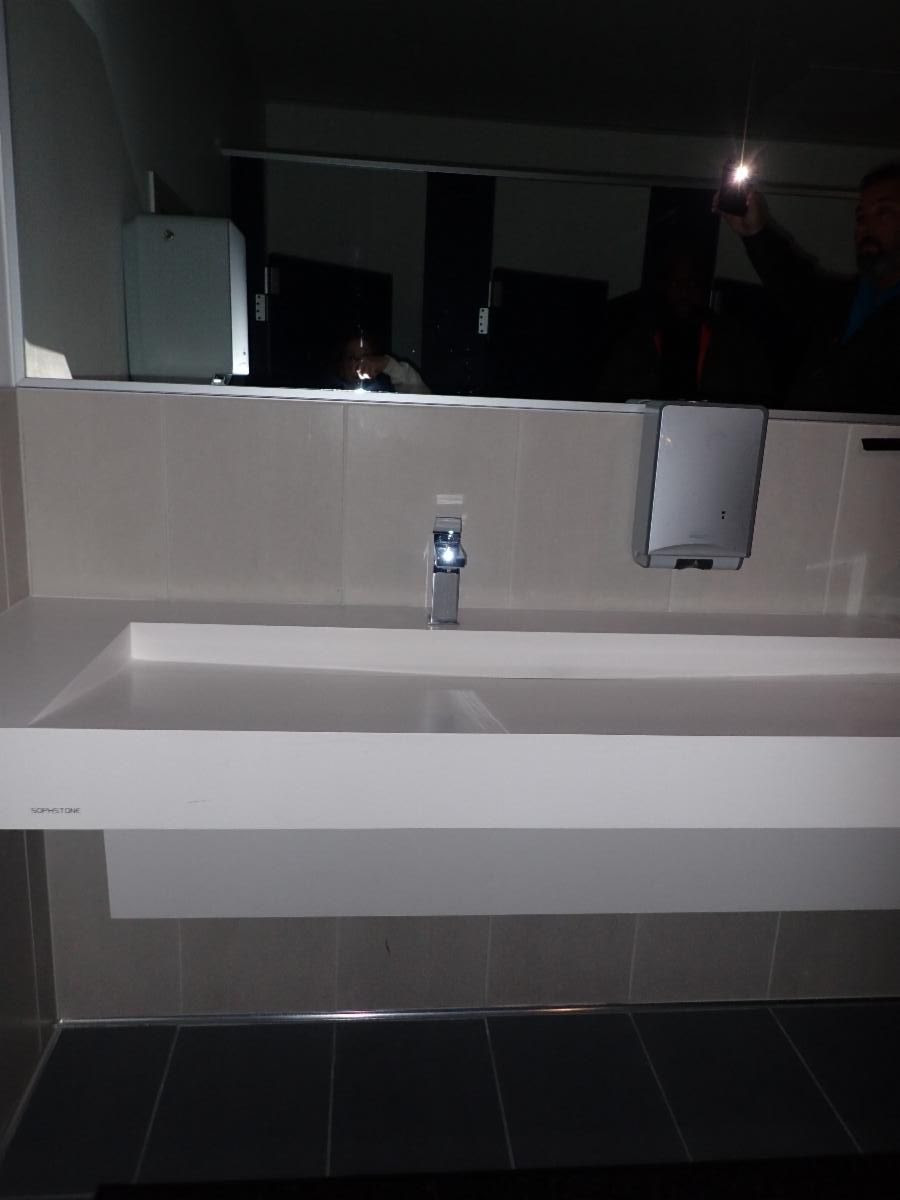
The mirror at the restroom shown above is mounted higher than 40″ a.f.f. to the reflective surface. It is built into the tile and therefore difficult to correct without tearing up the tile. Therefore a full length mirror would be a good solution for this violation.
NEW TDLR PROCESS OF REGISTRATION
For my Texas Architect and Texas Owner readers, TDLR has a new process to follow for registering a project with the State. This is before you can receive the TDLR number (TABS number). TDLR now requires that you provide proof of ownership. Below is the flow chart of the new system.

Here are the forms that you will use in order to register the project:
if you would like us to register the project for you, you would fill out the Project registration form and also provide the following (depending on what type of ownership the property is held by)
Limited Liability Ownership Form
If the Owner (The title holder of the property) is designating a different Entity to sign on their behalf, then the follow form is required as well:
This Designated Agent works for a different entity as the title holder. Anyone who works directly for the Title Holder can sign on their behalf and does not require the Owner’s Designated Agent form.
Need a “Barrier Free” HSW AIA approved CEUs?
November 18, 2025- TAID Day of Learning
Avoiding ADA and TAS Violations in Interior Design – .1 CEU, BF
 Abadi
Abadi 
